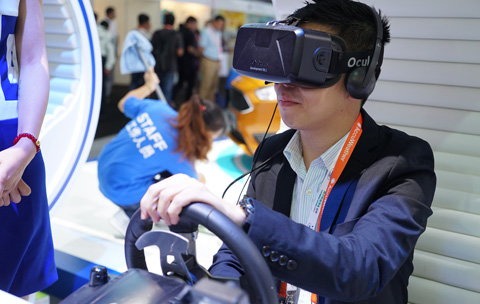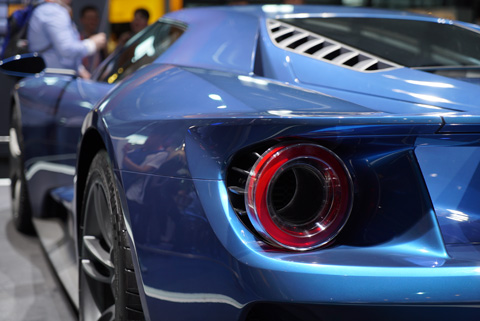The word luxury is not commonly uttered in the Philippines, or at least the proper context of it. As a kid I initially associated it with something that is very special and exclusive — that fancy vinyl covered Trapper Keeper my rich classmates in grade school had, for example, that was all the rage in the late 90’s. As I made my way into adulthood it became more apparent that these items are either expensive, opulent, or out of reach for the common folk. I also discovered that any item can be classified as such; from bags, shoes, watches, and even cars. What makes the last one different from the others mentioned is the trickle effect — over time features that are only found in higher-end models tend to make their way down to more basic models to improve safety, efficiency, and driving experience. This, in turn, makes what was then a luxury more accessible. Or does it?
Queue the Ford Explorer Sport.
Back in 2011, Ford decided to push the envelope with their 5th generation Ford Explorer Sport model with features normally found in higher-end models – push button start/stop, remote engine start, power liftgate, power adjustable pedals with memory, premium leather-trimmed seating, heated and cooled front seats, adaptive cruise control, active park assist, SoundScreen laminated acoustic and solar tinted windshield with rain-sensing wipers, High-intensity discharge headlamps (HID) and LED tail lamps. Classified as an SUV it wasn’t the cheapest (priced north of Php2M) but it did come with all the bells and whistles that you would normally find in a vehicle that cost way more.
Fast forward to 2016 and what we have here is the latest iteration of the “basic” model – the 2.3 Ecoboost. It’s worth mentioning that the only difference this model has over its higher spec’d sibling is the engine (2.3L vs 3.5L) and drivetrain (2WD vs AWD). Everything else is relatively the same.
Exterior

The latest model gets a handsome facelift that resembles the F-150 which shows a hint of aggression. The lights are bigger and sharper (cladded with LEDs), the front grill is reminiscent of an angry cheese grater, and a silver accented chin is now present to round the front out. The fenders have also been slightly reworked to accommodate all these changes.
The overall silhouette of the Explorer remains the same, with the floating roof effect still achieved by having the A and B pillars blacked out which ties the look altogether and adds a touch of class.

The rear also gets reworked tail lamps that follow the aggressive queue of the front.
A notable upgrade will be the camera washer that activates when you decide to mist your windshield or rear glass. This is the first time I have seen these on a sub Php 3M car, huge kudos to Ford.
Below are more photos of its exterior:




Interior

Once you hop in it’s easy to be overwhelmed with all the technology and refinement that the Explorer Sport has gone through over the years. When Ford decided to improve all their model line-ups they were serious, and it shows. They’ve ditched the cheap plastic and vinyl feel of the interior and have gone with a well thought out, almost symmetrical, layout that mimics modern European sedans. Coming from the previous model, you wouldn’t really notice any big differences at first – until you start driving it.

The devil is in the details, as they say. The front driver and passenger vantage point presents a steering wheel with a revised button layout, the accents now finished in satin black. The speedometer of the instrument cluster now has the drive indicators horizontally aligned and gone are the plasticky silver inserts on the doors and center console.

The sync2 infotainment system display with the Sony interface remains the same except for the physical button layout that is now in matte black with the climate controls present. I personally prefer the old piano black finish on the previous model but having the cooled and heated seat buttons handy is an acceptable compromise. It definitely is a very comfortable place to be.


The rear seats are pretty much the same as the previous model, with the power folding and stowing third row still doing its nifty tricks.








Engine and Overall Performance

While it’s predecessor’s 2.0 liter Ecoboost engine was not a slouch, Ford decided to increase the displacement this year to 2.3 liters. That means the horsepower and torque ratings are higher; 13% (274HP @ 5,500rpm) and 11% (408NM @ 3,000rpm) respectively. On the road, it translates to a quicker reaction off the line especially when you are overtaking.

At the helm of the Explorer, there is a certain sense of confidence that you will feel. The steering is well-assisted and direct but lacked a lot of feedback especially when you are going on highway speeds. The suspension has been tuned to be planted and to soak up bumps well, but leave enough stiffness and roll when you corner to remind you that this is still a 2.5 ton SUV. It certainly devoured the Kaybiang – Batangas – Tagaytay route with relative ease.
While I appreciate the technology around proximity sensors, their beeping sounds are somewhat nerve-wracking when we were stuck at EDSA traffic. The bumper-to-bumper situation simply triggers the sensors every once in a while. Thankfully, it could be turned off with a press of a button. This is what I did and I just turned it back on again when I found myself parking the SUV in a tight area.

One additional safety feature I found very handy though was the Lane Departure technology – amber lit indicators built in both the side mirrors that are hooked up to the rear and side sensors. It works by having an amber LED bulb constantly light up when a vehicle at speed is flanking behind you and having that same amber LED bulb blink when a vehicle is right beside you. This small safety addition can help any driver – experienced or not. I am looking forward to seeing this become a standard on all vehicle makes and models.

Since it is categorized as an SUV one would think that the Explorer can handle floods easily. During our EDSA drive home a torrential downpour occurred which resulted to the Cubao underpass being a bit flooded. While going through it was a piece of cake there was a slight feeling of discomfort when I heard that water hit the Explorer’s underbelly. It’s a drawback of all monocoque chassis and is the primary reason why serious off-road vehicles are still made with the body on frame design. While it has enough ground clearance to go over a lot of potential obstacles (large floating random trash and pieces of lumber) and huge potholes, it would be prudent not to test its water wading limits or off-road capability.
Fuel Consumption

Ford claims that despite the bigger engine, the fuel consumption remains the same. While that might be true, it is still nothing to write home about. The lower single digit km/L (5km/L) reading that we’ve discovered when we traversed Monday afternoon rush hour traffic on EDSA is proof of that. On mountainous roads and twisties it does go up (7.5km/L) but the Explorer is really more at home travelling long distances on highways (up to 11.8km/L on the NLEX), but don’t really expect it to sip fuel like a modern CRDI diesel.
Conclusion

Living with the Ford Explorer for a few days made me realize a few things – First off, it is HUGE. It’s 2000mm width will be more evident once you try to squeeze it through EDSA traffic or in the typical mall parking facility but that same aspect makes it so planted on the highways. This is not your typical Thai-made SUV or crossover.
Second, it is well built – the amount and type of insulation used, tight panel gaps, and the lack of any interior creaks during the testing is a testament to Ford’s current build quality. Although there were some misses with the infotainment unit (syncing issues with a cable tethered mobile phone), it was not a big enough qualm to take your attention away from everything else that they have done right.
And finally, it is thirsty – driving it in the city only got around 5km/L (lower during gridlock traffic), while traversing the Kaybiang Tunnel route and up the Batangas-Tagaytay highway yielded 7.5km/L. Unless you regularly cruise on the NLEX, you better have a generous fuel concession because the Explorer won’t run on hopes and dreams.
Would I recommend buying this vehicle? It depends on your current financial status in life. At Php2,479,000, if you are a young professional that is just starting out then I would urge you to look somewhere else, but if you are an accomplished corporate or business titan looking for an SUV that has European features and comforts at a more practical price then you have found it. Ford proves that luxury can be accessible but, sadly, it still isn’t cheap.

2016 Ford Explorer specs:
Make/Model: Ford Explorer Sport 2.3 EcoBoost
Drivetrain: 2WD – Front
Engine:
2.3L I-4 EcoBoost
MAX HP: 274 HP @ 5500 RPM
MAX TQ: 408 NM @ 3000 RPM
Exterior:
HID headlamps with integrated DRL
Body colored side mirrors with built in Spotter, LED Turn Signal, and Puddle Lamps
Shark’s Fin Antenna
Interior:
Leather wrapped steering wheel with controls
Perforated cooled and heated leather front seats with 10 way power adjustment
Power adjustable pedals
Power fold 3rd row seat
Dual Panel Moonroof
Safety:
4 wheel ABS
Front, knee, and curtain airbags
ESC with RSC (Roll Stability Control)
TPMS
Perimeter / Proximity alarm
Lane Departure Warning / Lane keep assist
Misc:
2x 4.2″ driver configurable color LCD
Front 180 degree camera with washer
8x Auxillary power points and 1x 230v power outlet
Sony HU with 12 speakers
What we liked:
• All power standard features – Steering wheel, pedals, seats, windows, climate control, sunroof control, 3rd row seating, and (almost) hands free tailgate access.
• Cooled (and heated) leather front seats – should be a new standard in tropical countries.
• Safety features – specially the Lane Departure technology.
• Modern and striking exterior styling.
• Well appointed interior layout.
• Low NVH levels.
What we disliked:
• Fuel consumption
• Numb steering feel – the electric assisted unit could be dialed in with a bit more feedback.
• Sensitive proximity sensors (specially during gridlock traffic in EDSA).
• Tailgate sensor intermittently working.
• Did we mention fuel consumption?
Additional inputs and photos by Kevin Francisco
The post 2016 Ford Explorer Review: Accessible Luxury? appeared first on YugaTech | Philippines News & Tech Reviews.








